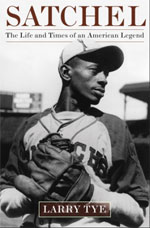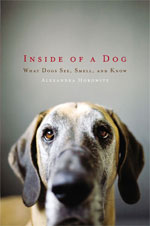
In one of the sports literature arenas that already boasts many seminal works of great storytelling and rhapsodic prose, Satchel: The Life and Times of an American Legend, by Larry Tye is a distinguished, inviting and elucidating addition. The book captures a pivotal time in the evolution of baseball and of North American society. As if there isn’t already a motherlode of stories and milestones to make that a captivating read, this book is rendered even livelier because it focuses on arguably the sport’s greatest practitioner and groundbreaker on numerous levels: athlete, entertainer, ambassador, philosopher clown prince and African American icon Leroy Robert “Satchel” Paige.
Close to the turn of the last century, Satchel Paige was born in Mobile, Alabama into the brimming, struggling but loving family of gardener Robert and domestic worker Lula Page – “close” because Satchel’s birthdate was long in dispute and frequently subject to scrutiny and confusion, some of it generated by Paige himself. And yes, even the spelling of Paige’s name changed as he embarked on a storied career as a virtually unstoppable baseball pitcher with raw talents evident at an early age that were honed starting with a teenaged stint in reform school.
Paige’s professional journey took him through the Negro leagues, an evolving amalgam of amateur, semi-professional and professional teams and leagues comprised chiefly of African Americans and some Latin Americans. The Negro leagues started in the late 1800s and lasted until the early 1950s, overlapping with Major League baseball for a few years after black players started to be integrated in that white-dominated sporting domain. Paige himself weighed in to the debate about who should have been the very first black player to break the baseball colour line, a role that fell famously to Jackie Robinson. Paige was still one of the first to cross that often treacherous barrier with signature aplomb, and certainly the one to leave the most indelible marks. Those marks were made and cemented before he departed after his last professional game in 1966, just shy of his 60th birthday (assuming we could, by then, trust his purported birth certificate).
If the range and longevity of Paige’s professional accomplishments against a backdrop of racial tension and societal change isn’t riveting enough, there’s also the diverting portrait of a singular man: charmer, trickster, and bon vivant (whether, at any given time, he could afford the cars, clothes, food, drink, companions, appurtenances et al that filled his lively and peripatetic life to overflowing). He was a life force exuding an ebullience that probably intentionally glossed over the pain he contended with maintaining a seemingly effortless physical prowess that was in play, quite literally, year round – from league play to barnstorming and other games and exhibitions across the United States, Canada, Mexico and the Caribbean. That pain surely extended to the emotional challenges of being separated from loved ones, not to mention being socially separated, even when that was supposedly a thing of the past. Paige’s almost unstoppable and at times inexplicable joie de vivre only seemed to fray around the edges in his final years, when he was out of the game and probably felt freer to give vent to some of the injustices with which he’d contended and had seemed to dance over, around and through at the time.
Author Larry Tye’s skills at distilling a complex story with layers of themes, towering mountains of data and gaping valleys of omissions in the data (for a sport deeply fascinated with and rich in statistics, recordkeeping in the early days and outside of the then exclusively white major leagues was sketchy at best) are breathtakingly impressive. That the themes and data are digestibly interwoven with infectious storytelling – true or tinted delightfully rose-coloured, all told with gusto – is more impressive still. That this daunting assignment was further complicated by a central figure who contributed as much to his own mystique as he did to his rightful legend makes the whole package, with astutely marshalled sources and research, extraordinary.
Some knowledge of baseball is useful to follow the terminology and have some frame of reference for the excellence of the accomplishments of Paige, his contemporaries and those who came after. Still, the reader will not be intimidated by an overly technical examination of the game. Tye frames well and accessibly where Paige stood in the context of the sport and its evolution, along with where he stood in the context of social changes external to but internalized by and affecting the sports world in which he operated and often but didn’t always thrive. Finally, Tye paints a vivid but also clear, honest picture of Paige, where there are wide and vibrant swaths of impressionistic versions of Paige out there (with some brushstrokes by Paige himself), but bringing the man into the sharpest focus possible to date, and possibly ever.
Satchel: The Life and Times of an American Legend is, by the way, a great read aloud book – that’s how my husband and I read this entire book. That’s tribute to Tye’s crisp, pleasant style which matches Paige’s argot in note perfect tandem … and of course, to the treasure trove of witticisms and repartee either on the record or legendarily associated with Paige and his contemporaries. (Yes, you can easily and abundantly google them.)


